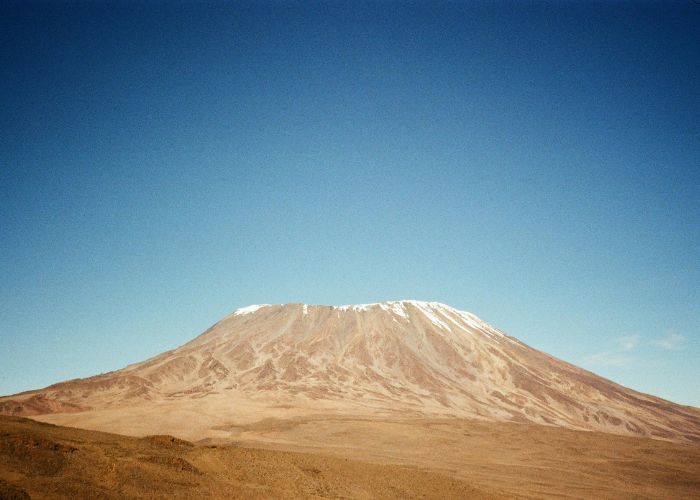What Are Tents Made Of? How to Choose the Best Material
- , by Laurence
- 15 min reading time
Discover the various materials tents are crafted from in our comprehensive guide. Learn about the durability, weight, and waterproofing features of tent fabrics.
You're looking for a new tent for your next outdoor adventure, but you've found yourself lost in a sea of material options and unsure of what makes one better than the other.
Well, worry no more. We've broken down the different materials that are used to make modern tents to help you make an informed decision.
Whether you're concerned about UV protection, want a lightweight material for bike-packing, or you're a newbie wanting an introduction to tent materials, we've got you covered!
Our handy guide will take you through what tents are made of and how to choose the best material for your outdoor adventures.
Common Tent Materials
We've combined our 25 years of experience with camping and the outdoors to identify some of the most common tent materials on the market.
From traditional canvas to high-tech synthetic fabrics, we'll break down how each material can benefit your trip to help you choose the best tent for your next outdoor adventure.
|
Tent Material |
What are the Benefits |
|---|---|
|
Polyester |
– Resistant to UV degradation – Dries quickly – Less prone to mildew than cotton – Lightweight & easy to transport – Retains colour well, resisting fading |
|
Cotton Canvas |
– Highly durable & robust – Excellent breathability, reducing condensation – Insulates well, helps tent stay cool in hot weather & warmer when it's cold – Long lifespan when properly maintained |
|
Nylon |
– Extremely lightweight, great for backpacking tents – Quick-drying – Resistant to mildew and rot – Compact when packed down |
|
Ripstop PVC |
– Exceptionally waterproof & wind-resistant – Highly durable, resistant to tears & punctures – Ideal for harsh weather conditions – Easy to clean & maintain |
|
Polycotton |
– Combines the durability & insulation of cotton with the lightness & water resistance of polyester – Breathable, reducing condensation – Good resistance to UV degradation – Balances durability with weight |

Polyester
Polyester is favoured in the manufacture of modern tents primarily for its robust durability and excellent weather resistance.
This synthetic fabric has the innate ability to withstand prolonged exposure to the sun thanks to its UV-resistant properties.
Unlike natural fibres, which can deteriorate rapidly under the harsh glare of the sun, polyester retains its strength and colour vibrancy over time.
Its resistance to water and mildew also makes it an ideal material for outdoor camping gear, ensuring users stay dry and comfortable regardless of the weather conditions.
The fabric's lightweight nature makes it easier for campers to transport and set up their shelters with minimal effort.

Cotton Canvas
Cotton canvas has been a popular choice for tent material for many years, revered for its exceptional breathability and insulation properties.
This natural fabric allows for air to circulate effectively, reducing condensation inside the tent and maintaining a comfortable temperature throughout varied weather conditions.
In the heat, a canvas tent remains markedly cooler compared to its synthetic counterparts, while in cooler climates, it can retain warmth more efficiently.
Also, cotton canvas is highly durable and can last for decades if properly maintained, which is a huge bonus when it comes to camping gear.
This, coupled with its ability to provide a more 'at-home' feeling due to its aesthetic texture and substance, makes cotton canvas an excellent tent material.

Nylon
Nylon, another synthetic fabric, is commonly used in tent manufacturing for its exceptional strength-to-weight ratio and versatility.
This material is inherently lightweight, making nylon tents an excellent choice for backpackers and hikers who prioritise minimal weight and compactness in their gear.
The Naturehike Outdoor Vik 2 Series Ultralight Nylon Tent is the perfect example of how lightweight nylon can be.
Nylon also offers significant resistance to abrasion and tearing, ensuring durability even when subjected to rugged outdoor conditions.
Its water-resistant properties, further enhanced by specific coatings such as silicone, make it an ideal choice for shelter against rain.
However, it's worth noting that while nylon is water-resistant, it may not be as breathable as other materials like cotton canvas, potentially leading to increased condensation inside the tent in certain conditions.
Ripstop PVC
Ripstop PVC stands out in the tent manufacturing world for its unmatched durability and resistance to extreme weather conditions.
Characterised by a reinforced fabric with a crosshatch pattern, this material is engineered to prevent tears from spreading, hence its suitability for camping in rugged terrains and wild camping.
Its waterproof qualities are exemplary, ensuring that the interior of the tent remains dry during heavy rainfall. This fabric is also notably resistant to both UV rays and mildew, preserving the tent's integrity and appearance over prolonged periods of outdoor use.
Tents made from ripstop PVC are especially popular among campers who demand high performance and longevity from their gear.
Ripstop PVC is also a popular choice for sleeping bags and bivvy bags like the Highlander Kestrel Rip-Stop Bivvy. This durable material means your kit won’t damage your sleeping bag, leaving you high and dry.
Polycotton
Polycotton is a blend of polyester and cotton that combines the best attributes of both materials, making it an increasingly popular choice for tent fabric among campers.
This innovative blend capitalises on the durability and weather resistance of polyester while retaining the breathable and comfortable feel of cotton. The result is a tent material that offers a more comfortable living environment, reducing tent condensation compared to fully synthetic tents.
Its ability to regulate temperature more effectively than polyester alone makes it perfect for use in a variety of climates, keeping the interior cooler in hot conditions and warmer when it's cold outside.
Also, polycotton tends to be more resistant to UV damage and wear over time, ensuring that tents made from this material are not only comfortable but also long-lasting and reliable.

Tent Groundsheet Materials
Tents are about more than just the material of the rainfly. What your tent footprint or groundsheet is made from also matters.
As with the main body of the tent, there are a few options you can choose from, all of which have their own benefits.
Some popular groundsheet materials include
- Polyethylene (PE) – This material is good because it is relatively inexpensive and waterproof but can be quite heavy to carry around.
- Polyester – This is a common groundsheet material because it is durable, waterproof and lightweight.
- Nylon – Nylon is also a popular choice for groundsheets due to its strength-to-weight ratio and water-resistant properties. However, as with the main body of the tent, it may not be as breathable as other materials.
- PVC – The majority of modern groundsheets, like the DD Hammocks Superlight – Bikepacker Groundsheet, are made from PVC thanks to its excellent durability and waterproof properties. It is also resistant to UV damage, making it a reliable choice for long-term use.
- Canvas – For those who prefer a more traditional camping experience, canvas groundsheets offer breathability and insulation similar to their tent counterparts. However, they can be heavier and bulkier to transport.
Each of these materials has its own strengths and advantages, such as being more durable, water-resistant, or lightweight.
Ultimately, it's essential to consider the type of terrain you will be camping on and whether you require additional protection from moisture when selecting a groundsheet material.

Different Types of Tent Poles
Another aspect of camping where the material makes a difference is the tent poles. With modern manufacturing processes, there are so many options for your tent poles that can make a huge difference depending on where you're camping.
- Glass-Reinforced Plastic (Fibreglass) – These tent poles are made from glass fibres coated in plastic, resulting in a lightweight but durable option, like the DD Hammock Poles. However, they can be quite bulky to pack and transport.
- Aluminium Alloy – Aluminium poles, like the DD Tarp Pole, are a reliable choice for most camping trips, thanks to their strength-to-weight ratio and versatility. They can withstand strong winds better than some other materials, making them ideal for harsher weather conditions
- Steel – These poles are less common nowadays, but they are still used for heavy-duty camping and extreme weather conditions. They are the heaviest option but offer excellent durability.
- Carbon Fibre – Carbon fibre poles are relatively new to the market, but their strength and lightweight properties make them a popular choice for ultralight backpackers and hikers. However, they can be vulnerable in extreme weather conditions.
- Air Tent Poles – The newest type of tent pole is the air tent pole. These are specifically built into air tents and offer incredible durability and portability. They also make it incredibly easy to pitch your tent.

What to Consider When Choosing a Tent
Choosing the right tent is essential for ensuring a comfortable and safe camping experience. Factors such as the camping environment, season, number of occupants, and specific needs should be taken into consideration.
Season & Weather Compatibility
Weather compatibility is crucial; ensure the tent fabric and structure can withstand expected conditions, from heavy rains to strong winds.
You’ll find that many tents are categorised as three-season or four-season, which means…
- Three-season tents – ideal for spring, summer and fall camping, designed to withstand light winds and moderate rain.
- Four-season tents – made for extreme conditions, including heavy snowfall and strong winds. These are great for mountaineering or winter camping.
You should choose the most appropriate tent based on the season you plan to camp in.
For example, if you’re going camping during the summer, a three-season tent will suffice. However, if you’re planning a winter camping trip, a four-season tent would be more suitable.
Size & Weight
Size and weight are important for portability and for making sure there’s enough room for all campers to comfortably fit inside.
Most tents will come in 1-person, 2-person, and 3 or-more-person tents. You should consider the number of people in your group and how much gear you will need to store in the tent when choosing a size.
Additionally, pay attention to the weight of the tent as it can vary greatly depending on its design and materials used.
If you plan on backpacking or hiking to your campsite, a lightweight tent would be much more convenient – and it’ll save your back from unnecessary strain.
Ease of Setup
When choosing a tent, consider how easy it is to set up. If you’re camping with family, you’ll want an easy-pitch family tent that can be set up quickly and without much effort.
On the other hand, if you’re a solo adventurer or prefer more challenging camping experiences, a more complex tent setup may not be an issue.
Think about your destination as well – will you be setting up camp on uneven terrain or in windy conditions? Look for tents with sturdy poles and secure anchoring systems to ensure stability in these situations.
Dome-style tents typically have fewer poles and can be pitched quickly, while cabin-style tents take longer but offer more headroom.

Durability & Quality
The durability of materials influences the tent’s longevity and resistance to harsh terrain and weather conditions. Look for tents made of high-quality, rip-resistant materials, like the ones we’ve seen above.
Additionally, tents with reinforced stitching and weather-resistant coatings will be more resilient against wear and tear.
It’s also important to consider the quality of the tent’s zippers, as these are often one of the first things to break on a tent.
Look for heavy-duty zippers that can withstand frequent use and potentially rough handling.
Ventilation
Ventilation is another important factor, as it prevents condensation and maintains a comfortable interior climate. Tents with multiple windows and vents can help keep the air flowing and reduce moisture buildup.
Some tents also feature mesh panels on the doors and ceiling for added ventilation while keeping bugs out.
Keep in mind the placement of these openings, as they should be strategically positioned to promote cross-ventilation and avoid direct exposure to wind or rain.
Read our Tent Buying Guide for more tips and advice on choosing the best tent.

Summary: Choosing the Right Tent Material for Your Trip
Armed with a comprehensive understanding of tent materials, you can make an informed decision about what types of fabric are going to best suit your needs on your camping trips.
Whether you're prioritising durability, weather resistance, breathability, or weight, there is a tent material out there that ticks all your boxes.
Here at Wood To Water, we only stock high-quality tents made from the best materials, ensuring you can have a comfortable and enjoyable camping experience every time.
From one-person tents for solo adventures to larger 3-person tents for group camping trips, we have a wide range of options to choose from that are all made with top-of-the-line materials by reputable brands.
Shop online today and enjoy free shipping on orders over £60!
FAQs
Which Tent Materials are Fireproof?
What is the Strongest Tent Material?
What are Traditional Tents Made From?
What Material Are Winter Tents Made Of?
Tags
Little more reading time?
-

, by Laurence Kay UK Foraging Guide: How to Stay Safe Outdoors
-

, by Laurence Kay A Hiker’s Ultimate Guide to Climbing Kilimanjaro
-

, by Laurence Kay The Ultimate Petra Hike Guide



